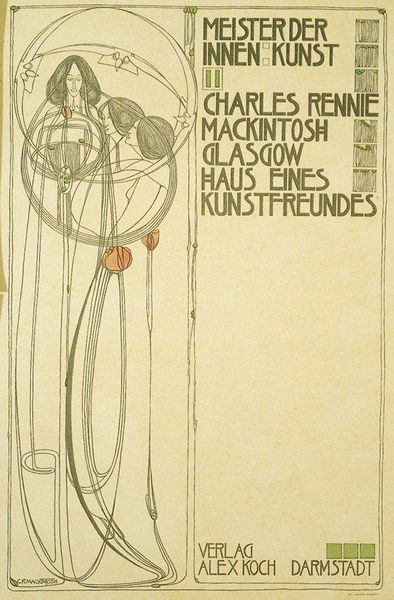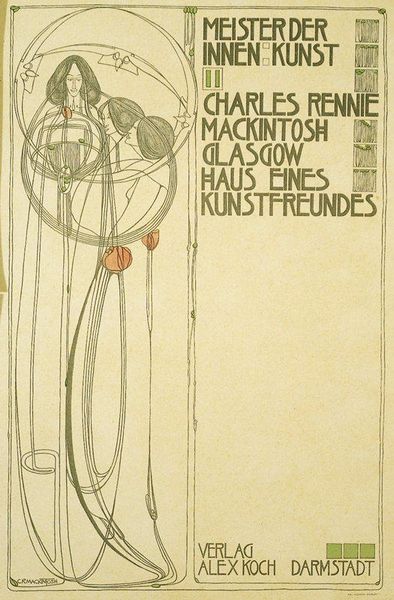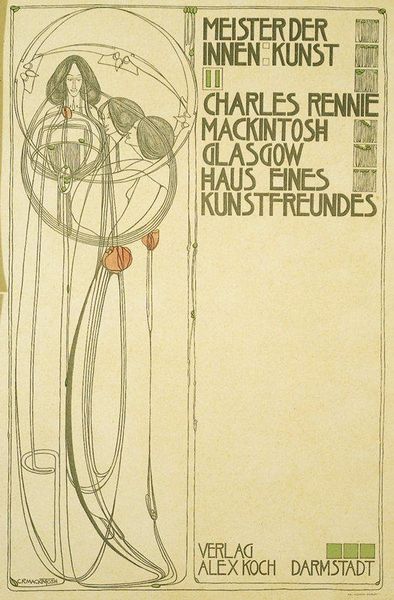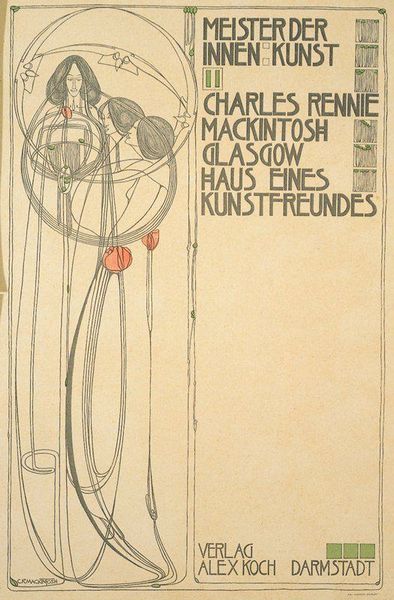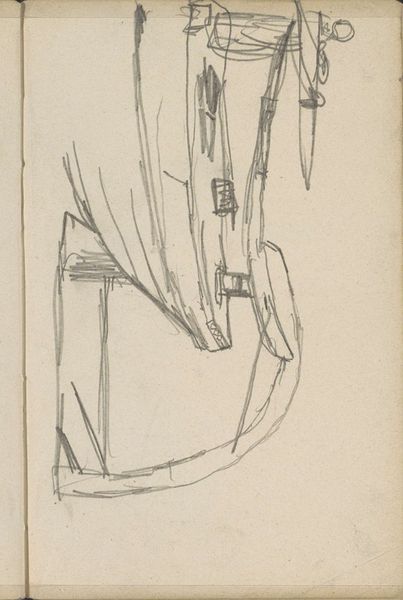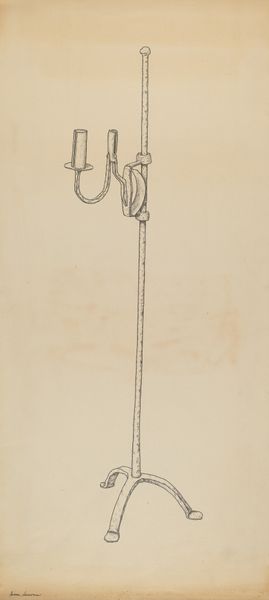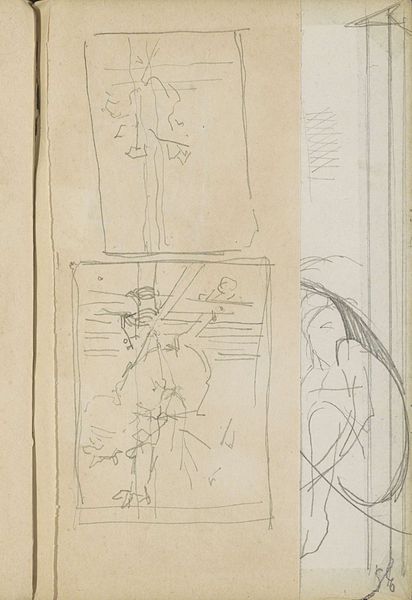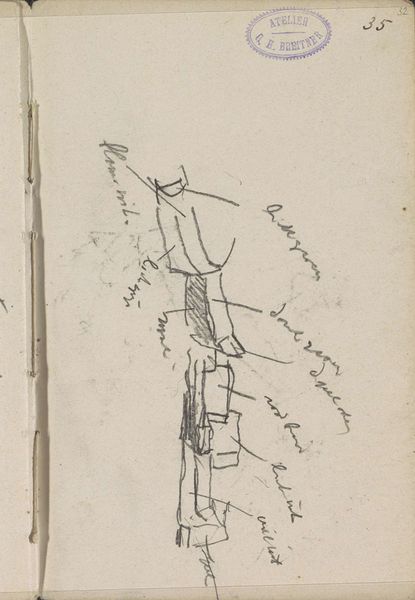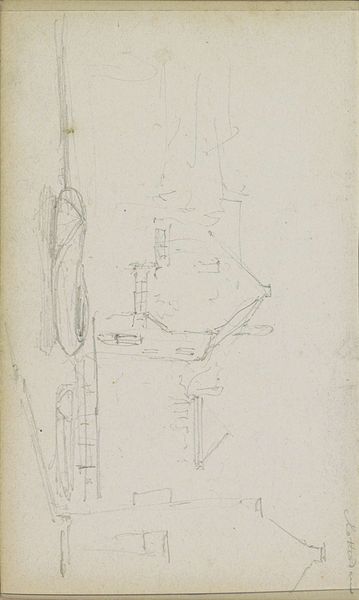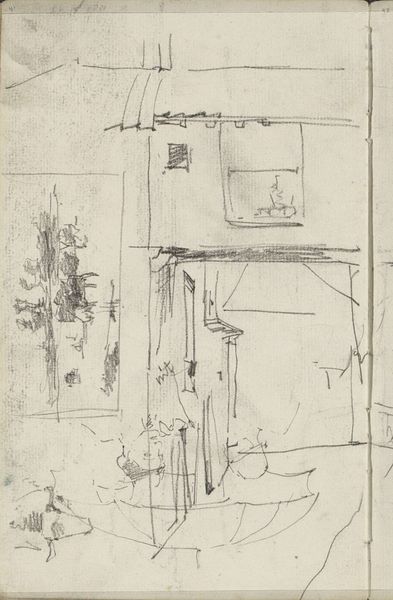
#
germany
#
hand-lettering
# print
#
old engraving style
#
hand drawn type
#
hand lettering
#
glasgow-school
#
personal sketchbook
#
hand-drawn typeface
#
ink drawing experimentation
#
pen work
#
sketchbook drawing
#
sketchbook art
Dimensions: 20 7/8 x 15 5/8in. (53 x 39.7cm)
Copyright: No Copyright - United States
Curator: Looking at “Plate 11” created by Charles Rennie Mackintosh in 1902 and housed here at the Minneapolis Institute of Art, what catches your eye first? Editor: It has this hauntingly graceful aura about it, very muted palette, aside from those little jolts of reddish orange. The composition, too, is rather striking – such spare lines that give the entire design this spacious feel despite all the text. Curator: Indeed. Mackintosh was at the forefront of the Glasgow Style, a distinctly Scottish take on Art Nouveau. Considering the socio-political context, it emerged as a counter-movement against industrialization and Victorian stuffiness. There was an explicit interest in liberating domestic spaces for women and centering themes that addressed evolving modern identities. Editor: I can certainly see echoes of that in the artwork's linework; almost ethereal and so finely drawn that they articulate these contained organic structures and a central sphere around figures. Curator: Exactly, and consider too the hand-lettering and the fact that it almost mimics elements within German culture, something about how geometric patterns seem to coexist. The title, "Meister der Innenkunst," hints at its commission as a promotional poster. But beyond advertising, what statements do you imagine it makes about design? Editor: The composition is interesting in this respect because the geometry that frames these female subjects reminds me of those strict notions or rigid molds, almost cages of the feminine from a particular epoch. What about how Mackintosh himself blurred boundaries? He's working across fine art and architecture. The design, down to typeface, implies function is part of his idea of art. Curator: Yes. His holistic view makes this poster an important statement about Gesamtkunstwerk – the total work of art that merges architecture, interior design, and the graphic arts into an integrated, aesthetically driven lifestyle. Editor: So we’re moving from individual autonomy, as alluded to in art theory, to these collaborative art forms that permeate lived spaces? Curator: Precisely. His interest in blurring such categorical divisions is fascinating to me as a social historian invested in evolving political expression in fine arts. Editor: Yes. And for me, it lies in exploring these foundational aspects that inform design principles and stylistic developments across creative fields.
Comments
No comments
Be the first to comment and join the conversation on the ultimate creative platform.
